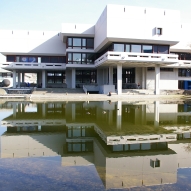| Dokumentenart: | Artikel | ||||||||||||||||||||||||||||||||||||||||||||||||||||||||||||||||||||||||||
|---|---|---|---|---|---|---|---|---|---|---|---|---|---|---|---|---|---|---|---|---|---|---|---|---|---|---|---|---|---|---|---|---|---|---|---|---|---|---|---|---|---|---|---|---|---|---|---|---|---|---|---|---|---|---|---|---|---|---|---|---|---|---|---|---|---|---|---|---|---|---|---|---|---|---|---|
| Titel eines Journals oder einer Zeitschrift: | Oncogene | ||||||||||||||||||||||||||||||||||||||||||||||||||||||||||||||||||||||||||
| Band: | 19 | ||||||||||||||||||||||||||||||||||||||||||||||||||||||||||||||||||||||||||
| Nummer des Zeitschriftenheftes oder des Kapitels: | 42 | ||||||||||||||||||||||||||||||||||||||||||||||||||||||||||||||||||||||||||
| Seitenbereich: | S. 4832-9 | ||||||||||||||||||||||||||||||||||||||||||||||||||||||||||||||||||||||||||
| Datum: | 2000 | ||||||||||||||||||||||||||||||||||||||||||||||||||||||||||||||||||||||||||
| Institutionen: | Medizin > Lehrstuhl für Innere Medizin III (Hämatologie und Internistische Onkologie) | ||||||||||||||||||||||||||||||||||||||||||||||||||||||||||||||||||||||||||
| Identifikationsnummer: |
| ||||||||||||||||||||||||||||||||||||||||||||||||||||||||||||||||||||||||||
| Klassifikation: |
| ||||||||||||||||||||||||||||||||||||||||||||||||||||||||||||||||||||||||||
| Dewey-Dezimal-Klassifikation: | 600 Technik, Medizin, angewandte Wissenschaften > 610 Medizin | ||||||||||||||||||||||||||||||||||||||||||||||||||||||||||||||||||||||||||
| Status: | Veröffentlicht | ||||||||||||||||||||||||||||||||||||||||||||||||||||||||||||||||||||||||||
| Begutachtet: | Ja, diese Version wurde begutachtet | ||||||||||||||||||||||||||||||||||||||||||||||||||||||||||||||||||||||||||
| An der Universität Regensburg entstanden: | Ja | ||||||||||||||||||||||||||||||||||||||||||||||||||||||||||||||||||||||||||
| Dokumenten-ID: | 14346 |
Zusammenfassung
Members of the polo subfamily of protein kinases play crucial roles in cell proliferation. To study the function of this family in more detail, we isolated the cDNA of human Fnk (FGF-inducible kinase) which codes for a serine/threonine kinase of 646 aa. Despite the homology to the proliferation-associated polo-like kinase (Plk), tissue distribution of Fnk transcripts and expression kinetics ...

Zusammenfassung
Members of the polo subfamily of protein kinases play crucial roles in cell proliferation. To study the function of this family in more detail, we isolated the cDNA of human Fnk (FGF-inducible kinase) which codes for a serine/threonine kinase of 646 aa. Despite the homology to the proliferation-associated polo-like kinase (Plk), tissue distribution of Fnk transcripts and expression kinetics differed clearly. In contrast to Plk no correlation between cell proliferation and Fnk gene expression was found. Instead high levels of Fnk mRNA were detectable in blood cells undergoing adhesion. The transition of monocytes from peripheral blood to matrix bound macrophages was accompanied by increasing levels of Fnk with time in culture. Neither treatment of monocytes with inducers of differentiation nor withdrawal of serum did influence Fnk mRNA levels significantly, suggesting that cell attachment triggers the onset of Fnk gene transcription. The idea that Fnk is part of the signalling network controlling cellular adhesion was supported by the analysis of the cytoplasmic distribution of the Fnk protein and the influence of its overexpression on the cellular architecture. Fnk as fusion protein with GFP localized at the cellular membrane in COS cells. Dysregulated Fnk gene expression disrupted the cellular f-actin network and induced a spherical morphology. Furthermore, Fnk binds to the Ca2+/integrin-binding protein Cib in two-hybrid-analyses and co-immunoprecipitation in assays. Moreover, both proteins were shown to co-localize in mammalian cells. The homology of Cib with calmodulin and with calcineurin B suggests that Cib might be a regulatory subunit of polo-like kinases.
Metadaten zuletzt geändert: 29 Sep 2021 07:37



 Altmetric
Altmetric